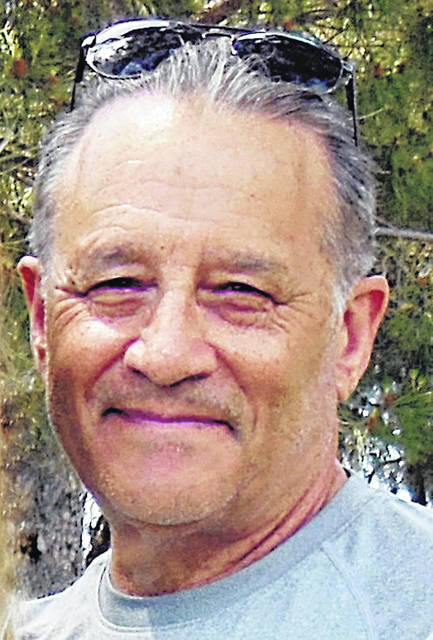
It’s been said that the COVID-19 pandemic has exposed all kinds of socio-economic weaknesses in America. The glaringly obvious is the state of our public health system. But now that the new school year is beginning, we are having to confront another serious failing. According to a report by the Federal Communications Commission “approximately 19 million Americans — 6 percent of the population — still lack access to fixed broadband service at threshold speeds.In rural areas, a quarter of the population — 14.5 million people — lack access to this service.”
Just to underline that point, one in four Americans in rural America lack home-based, fixed access to broadband Internet services. Other government estimates put the number closer to one in three, 33 percent lacking access in rural areas. And by rural, that means about 70 percent of the land mass of the United States.
No one knows for sure, but it is clear that millions of students in this country lack fixed home access to the Internet. It’s estimated that one million Ohioans lack a reliable Internet connection. This is a major defect in the U.S. and Ohio public educational systems when many school districts and colleges are reverting to either hybrid or full remote education solutions. What nourishes the health and well-being of our democracy is well-educated young people.
Infrastructure challenges have been a regular staple for rural communities. Let’s not forget plain old telephone service, access to clean water, cell phone signals, and now… threshold broadband Internet service.
I’d been thinking about rural broadband disparities for several weeks now when I was prompted by my latest edition of Farm and Dairy (Aug. 13) to find its front page above-the-fold headline: “Pandemic Exposes Rural Broadband Access Challenges.” River View Local School District Superintendent Dalton Summers led off the article by saying, “I think that our state is starting to see it… I think that this is the reality smacking them in the face a little bit.” Schools are facing not only an emergency need for access to the Internet, and for now that may mean paying for so-called hotspots in areas that have a strong enough cell phone signal, but also computers and the infrastructure set-ups that will keep kids socially distanced in their school settings. Federal CARES funding helps with interim stopgap solutions but not the underlying infrastructure problems.
A second prompt came when Governor DeWine announced that after initially requiring 50 percent funding matches to expand broadband services to students, he has reversed that decision, not requiring school districts match 50 percent of their allocations.
After the November election, likely on the agenda will be massive spending on infrastructure. If rural communities want to close the digital infrastructure gap, we need to be aggressive on the municipal, county, state and federal administrative levels. Digital infrastructure not only affects education and citizen access to information, but the delivery of medical services, agricultural systems and productivity, and potential municipal and county logistical services. Future-proofing our rural digital infrastructure will be essential to the new wave of renewable energy initiatives. Broadband access will be a basic, essential component.
Rural communities like Highland County need to be at the policy table. If post-pandemic America becomes an era of renewal, then we need to be thinking on the scale of the Rural Electrification Act of 1936. The inhibiting cost factor of expanding electricity, phone service, and broadband has always been a function of lesser demand in rural areas. Federal low-cost loans to coop organizations like, for example, South Central Power, to take on broadband expansion would mimic the methods used by the REA to get electricity into rural communities. Coops can amortize broadband expansion costs for 30 years.
The Ohio House has passed HB-13, a Residential Broadband Expansion Program, which would provide $20 million in grants to broadband providers to offset construction costs. Priority is supposed to go to areas without Internet access. Problem is, it’s been sitting in the Ohio Senate Energy and Public Utilities Committee since June 30, 2020. This, despite Governor DeWine saying, “Broadband access is key to help ensure that all Ohioans can succeed in the digital age,” and the fact that the majority of committee members represent rural areas. As new businesses look for cost effective locations in the digital age, priority number one will be reliable high-speed access to the Internet.
There are other problems though. There is something called the National Broadband Map, a product of the FCC. It determines digital needs by census data. If a census area has one, just one home with a fast Internet connection, the government’s mapping indicates that everyone else in that census area has fast Internet connectivity. Another problem. The Internet and cell-phone providers like to exaggerate their service potential which exacerbates the disparity problem. These factors muddy the initiatives of the government’s Universal Service Fund, which is supposed to subsidize phone and Internet access.
This is a moment when rural America needs to be “on it.” The pandemic has created an inflection point where those who never thought about the digital divide being a problem now realize it is essential to our recovery, to our dealing with distribution disparities, and our leadership as a nation.
Craig Settles of the Daily Yonder: Keep It Rural, writes, “Municipalities and counties offer access to funding sources, political clout and marketing muscle.” It’s vital that municipal and county leadership raise their voices and assert their jurisdictional authority to press the statehouse and regional broadband providers to act innovatively, to secure broadband access to our rural communities.
Bill Sims is a Hillsboro resident, an author, and runs a small farm in Berrysville with his wife. He is a former educator, executive and foundation president.


